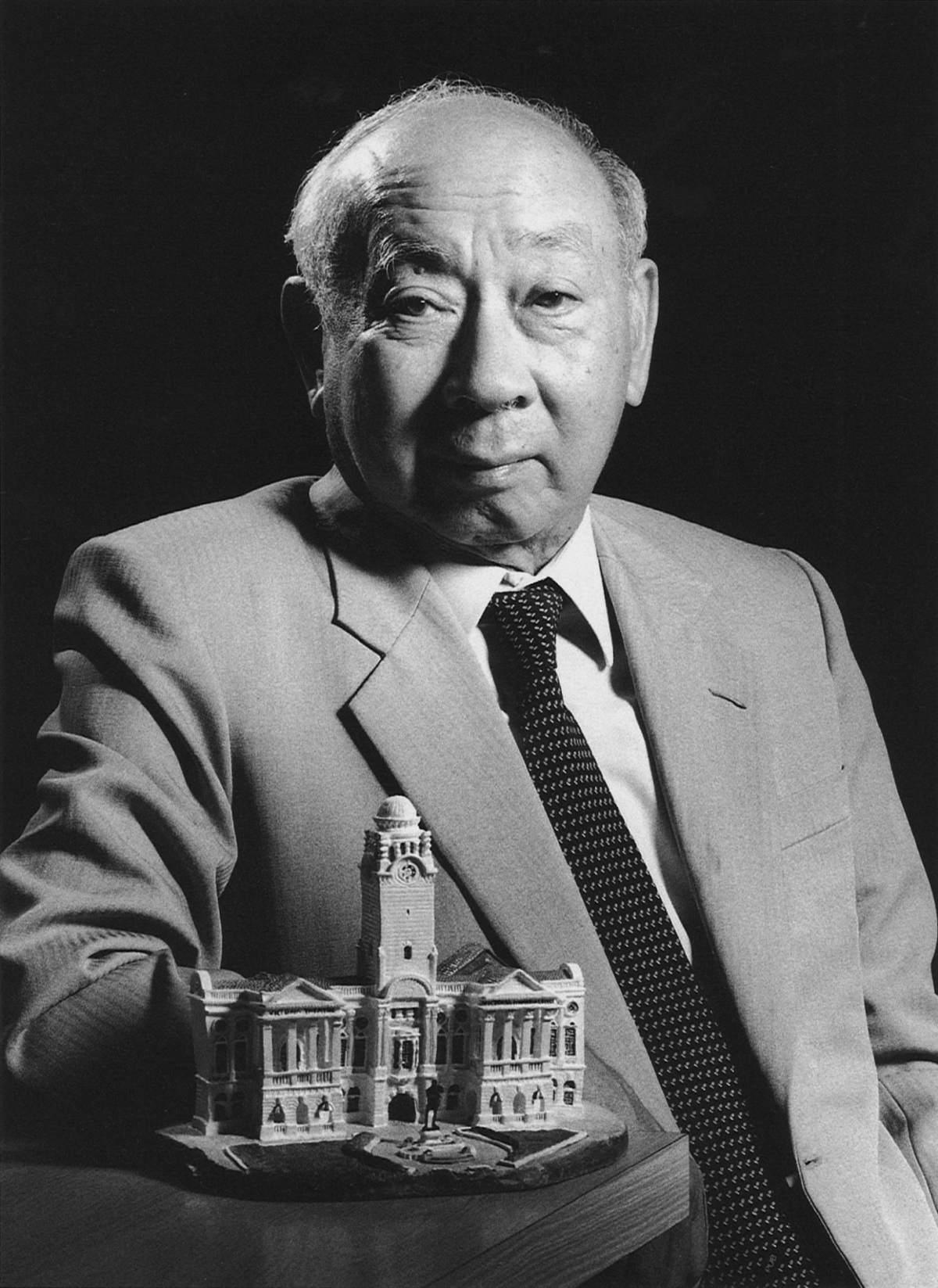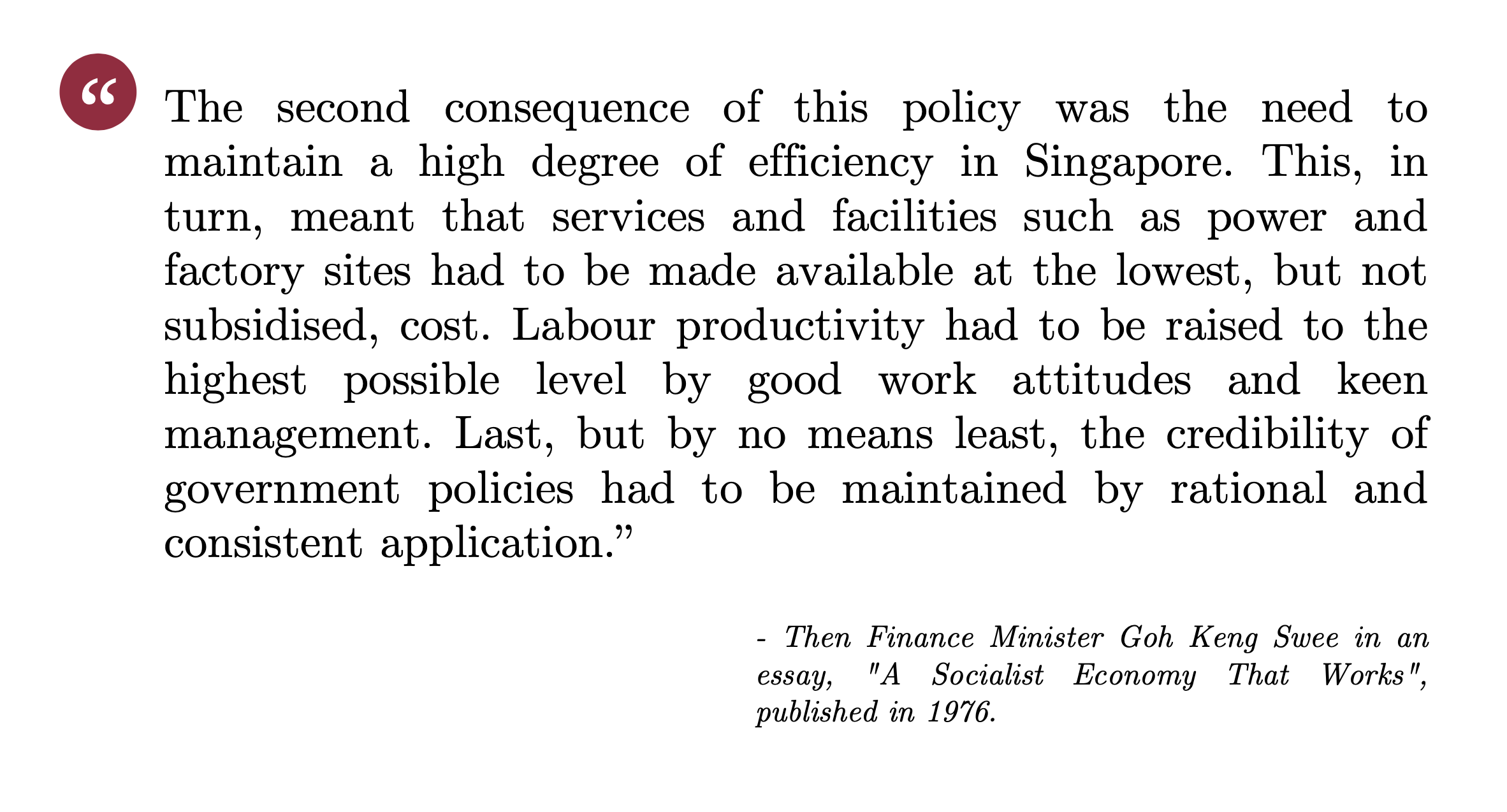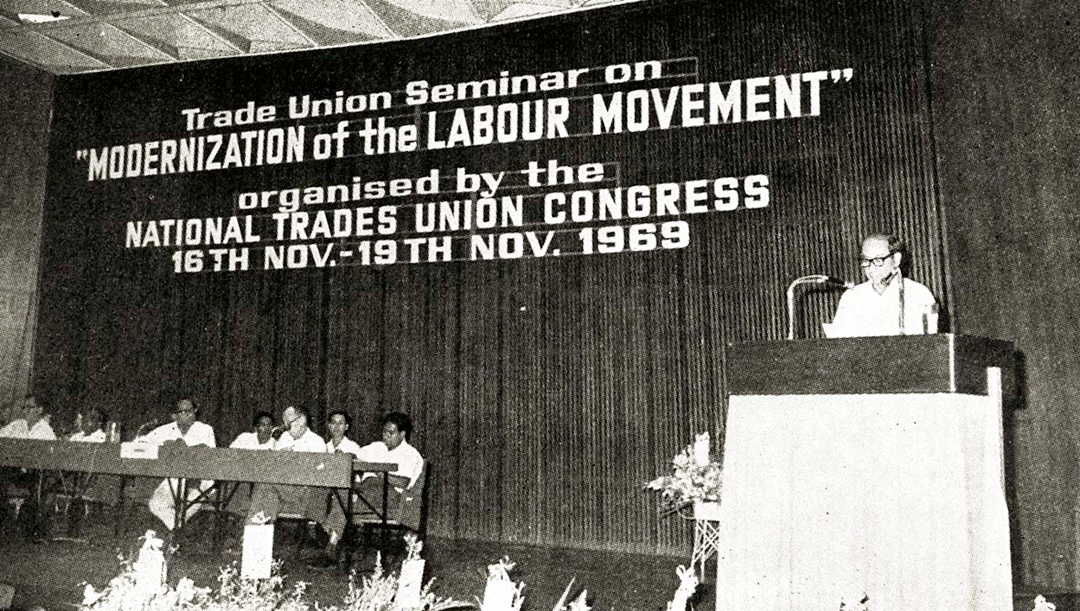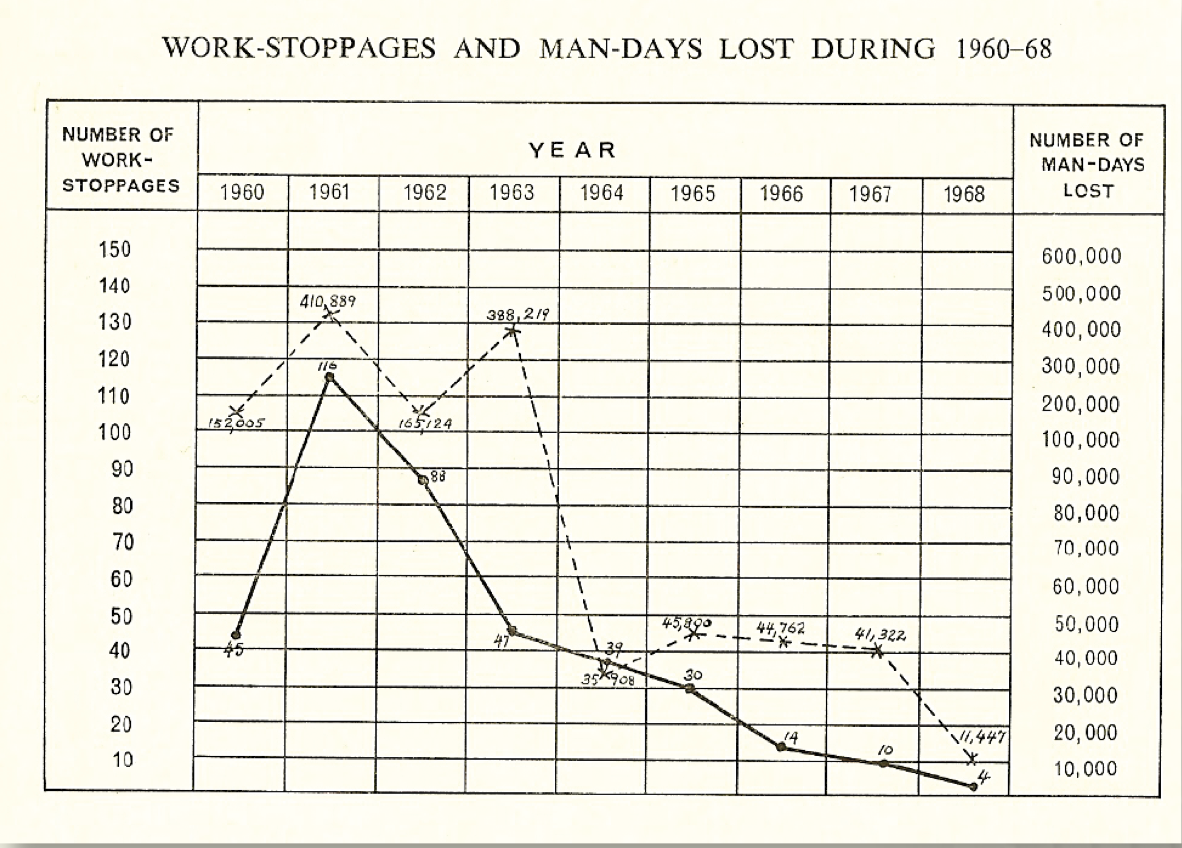1965-1970: Singapore’s Development Plan
As a new nation, Singapore had to rapidly industrialise the economy to address labour unrest
On this page
The exit from Malaysia thrust Singapore into the open. Without a hinterland nor natural resources, the challenges facing the new nation were immense. Labour unrest continued to fester while unemployment remained high. The only solution was to press on with the plan to rapidly industrialise the economy.
Without Malaysia’s large market, Singapore’s leaders had to think out of the box. Instead of focusing on the domestic market, our leaders switched to an export-oriented strategy. Labour-intensive industries were created to soak up unemployment while we pushed ahead with building infrastructure that would serve industries.
However, Singapore’s plans were disrupted by a shock announcement. In 1967, the British announced that it would withdraw its forces from Singapore, which would compromise Singapore’s defence and impact our economy.
Case study: The British military withdrawal
The British withdrawal meant that Singapore had to accelerate its plans for an export-led industralisation strategy. So while some newly independent nations with large domestic markets were adopting protectionist policies – ejecting foreign companies, slashing imports and manufacturing their own products for the domestic market – Singapore had to go against the grain and open our borders to foreign investors.
Gaining a Foothold in the Global Market
To survive, Singapore had to tap on the global market. As then-Finance Minister Goh Keng Swee explained:
Singapore’s growing industries produced goods not for the domestic market, which was far too small, nor even for the regional market in Southeast Asia…Our market was the world market. They brought with them not only production and management know-how, but also the world market for their products.— Then-Finance Minister Goh Keng Swee in an essay, "A Socialist Economy That Works", published in 1976

The economic rationale behind the courting of foreign investors was twofold:
First, large foreign companies targeted the global market. They had the necessary expertise and networks that would allow Singapore to quickly scale up these industries. They also had the financial capital to invest in Singapore’s infrastructure. For instance, oil company Shell built Singapore’s first oil refinery at the cost of S$30 million on Pulau Bukom in 1961.
Second, our goal was to eventually enable knowledge transfer from foreign companies to local enterprises. This would enable local companies to acquire the necessary technical expertise to start building local industries in the longer term.
Singapore thus pressed ahead with the export-oriented strategy.
EDB shifted its focus to promoting Singapore as an attractive destination for foreign investment. Its other functions were then transferred to new agencies set up in 1968. For one, initial function of providing financing to companies was hived off to the newly set-up Development Bank of Singapore (DBS). Jurong Town Corporation (JTC) took over the development and management of industrial infrastructure, while EDB’s export promotion division was absorbed by Intraco, a government trading company.
With that, EDB officers fanned out to foreign markets that included the United States and Japan to persuade big companies such as Texas Instruments, Fairchild and Seiko to set up their production bases in Singapore. EDB prioritised attracting these investments and went the extra mile to ensure that the foreign companies had what they needed.
In 1968, when National Semiconductor visited Singapore, EDB’s officers found out that there was an urgent need for the company to start production within two months.
EDB worked with other government agencies to quicken this process. Within two weeks of the visit, National Semiconductor was in business here. The speed and efficiency of this operation drew the attention of other American manufacturers. Fairchild came soon after, followed by Texas Instruments, Hewlett-Packard and General Electric.
To further boost Singapore’s attraction to foreign investors, the government also created a conducive investment environment.
In 1967, the Economic Expansion Incentives Act was introduced. It provided new tax incentives for investments. These included tax emeptions and reliefs, such as up to 90% remission of tax profits to approved enterprises for up to 15 years.
The government also continued to build infrastructure to support Singapore’s industrialisation efforts.
Read more: Supporting infrastructure
In 1964, the Port of Singapore Authority (PSA) was created to take over the functions of Singapore Harbour Board, which was previously in charge of port operations. In 1971, PSA also took over and converted the former British Naval Base Store Basin into Sembawang Wharves .
In 1965, as part of the Jurong industrialisation project, we opened Jurong Port, which handled bulk cargo used by industries located in Jurong.
In 1968, Neptune Orient Lines was established, and this gave Singapore another way to support the economy through fair freight routes.
Communication services such as postal, telegraph, telephone, and telex services also developed quickly between 1966 and 1973.
Focusing on Education and Training
As Singapore began vocational training in the early 1960s, by 1965 we had a pool of semi-skilled workers who could support the nation’s growing industrialisation. We continued putting emphasis on training and developing human capital to stay relevant.
As then-Finance Minister Goh explained:

Quelling Labour Unrest and Communism
Another key priority for the government was to stamp out the communist elements that were fomenting unrest and dissent. Dr Winsemius described this as a top objective for the government:
“Their (the communists’) goal was as little economic development as possible, in order to foment unrest and dissension; thus creating the basis for seizing power…It was evident that no entrepreneur would invest his money in a country disorganised to such an extent.— Dr Albert Winsemius in a speech to GE International Personnel Council Meeting in Singapore on 19 June 1984
.jpg)
The National Trades Union Congress was founded in 1961, after the communist elements broke away from the PAP. Over the course of three years, NTUC battled with the Singapore Association of Trade Unions for influence over workers. In 1968, the government amended the Industrial Relations Act, which was aimed at reducing the number of strikes in the economy.

Image: NTUC
In 1969, NTUC held the “Modernisation of the Labour Movement” seminar, a forum that looked to build on the new norm in industrial relations. At this seminar, then-PM Lee urged the unions to shed its image as purely as “a combat organisation… for class war,” and move towards acting in the interests of the nation. This formed the foundation of what would later be known as tripartism.
Read more: Tripartism
Tripartism refers to the collaboration among unions, employers and the government. The goal is for the three parties to work together in a consultative and collaborative fashion to further shared interests.
The National Wages Council, set up in 1972, is one key manifestation of tripartism. It aims to bring employers, unions and the government to a consensus on wages, an issue that was traditionally damaging to labour relations. Since then, the NWC issues yearly wage guidelines that take into account the interests of all three parties, ensuring compromise instead of confrontation.

Image: The introduction of tripartism in Singapore resulted in a marked decrease in the number of work stoppages and man-days lost by 1968; Singapore Year Book 1968; National Archives of Singapore
After the introduction of tripartism, the number of labour strikes decreased from 10 in 1972 to one in 1977. There were none from 1997 to 2012. In this same period, unemployment fell in Singapore and foreign direct investment rose.
Today, tripartism is seen as a key competitive advantage for Singapore. It has been called Singapore’s “secret weapon” for helping to boost the country’s economic competitiveness, promoting harmonious labour-management relations, and contributing to Singapore’s overall progress.
By 1970, about a decade after the industrialisation plan was first conceived, Singapore had achieved near full employment. Industrial action had dropped significantly. And a spirit of cooperation superseded the disruptions of the preceding years.
